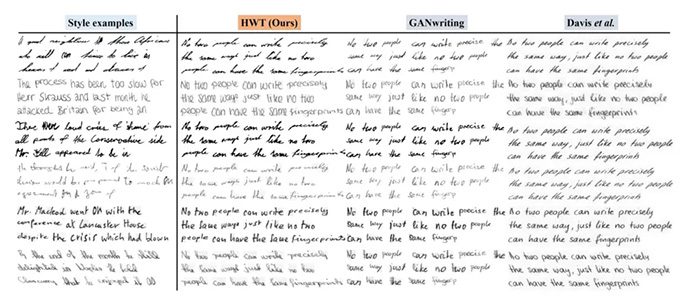Artificial Intelligence (AI) once again surprises us, this time with the ability to simulate handwriting.
Specifically, researchers at the Mohamed Bin Zayed University of Artificial Intelligence in Abu Dhabi claim they have developed an AI tool capable of accurately replicating a person’s handwriting. With just a few samples of handwritten text, this model can learn the individual’s unique style and penmanship.
“People cannot distinguish AI-simulated handwriting from real handwriting, and we are truly proud to see the tool’s capabilities reach such a level,” researcher Salman Khan shared in a press release.
AI has already demonstrated impressive capabilities in voice replication and image generation. Naturally, handwriting is the next target. Currently, this model primarily focuses on simulating English handwriting and has not been widely published. The research team has recently been granted a patent for this tool.

The AI tool HWT replicates the handwriting of 6 different individuals – (Image: mbzuai).
The researchers also acknowledge that the potential misuse of this tool for fraudulent and unethical purposes is a significant concern.
“We need to be cautious because it can be abused,” researcher Rao Muhammad Anwer stated. “Handwriting represents each person’s identity, so we are carefully considering before deploying this tool.”
In an interview with Bloomberg, the research team mentioned they would develop anti-fraud tools that could be utilized to decipher hard-to-read handwriting, such as that of doctors.
This development in AI brings both hope and anxiety. On the positive side, these tools could help restore damaged historical documents, assist visually impaired individuals or those with writing difficulties, and even create a novel style of art and entertainment. However, the negative aspects of these tools cannot be overlooked. The ability to forge signatures, important documents, or even works of art poses a serious threat.
The question arises: how can we maximize the benefits of AI while still managing the potential risks? This is a significant challenge that society must collectively address in the era of Technology 4.0.


















































